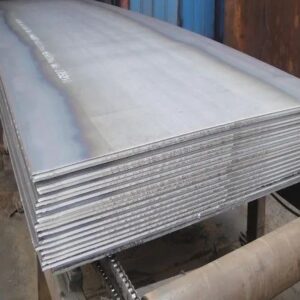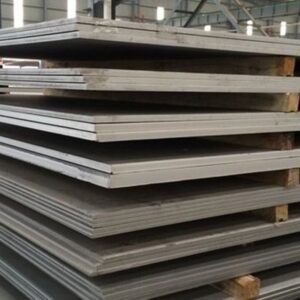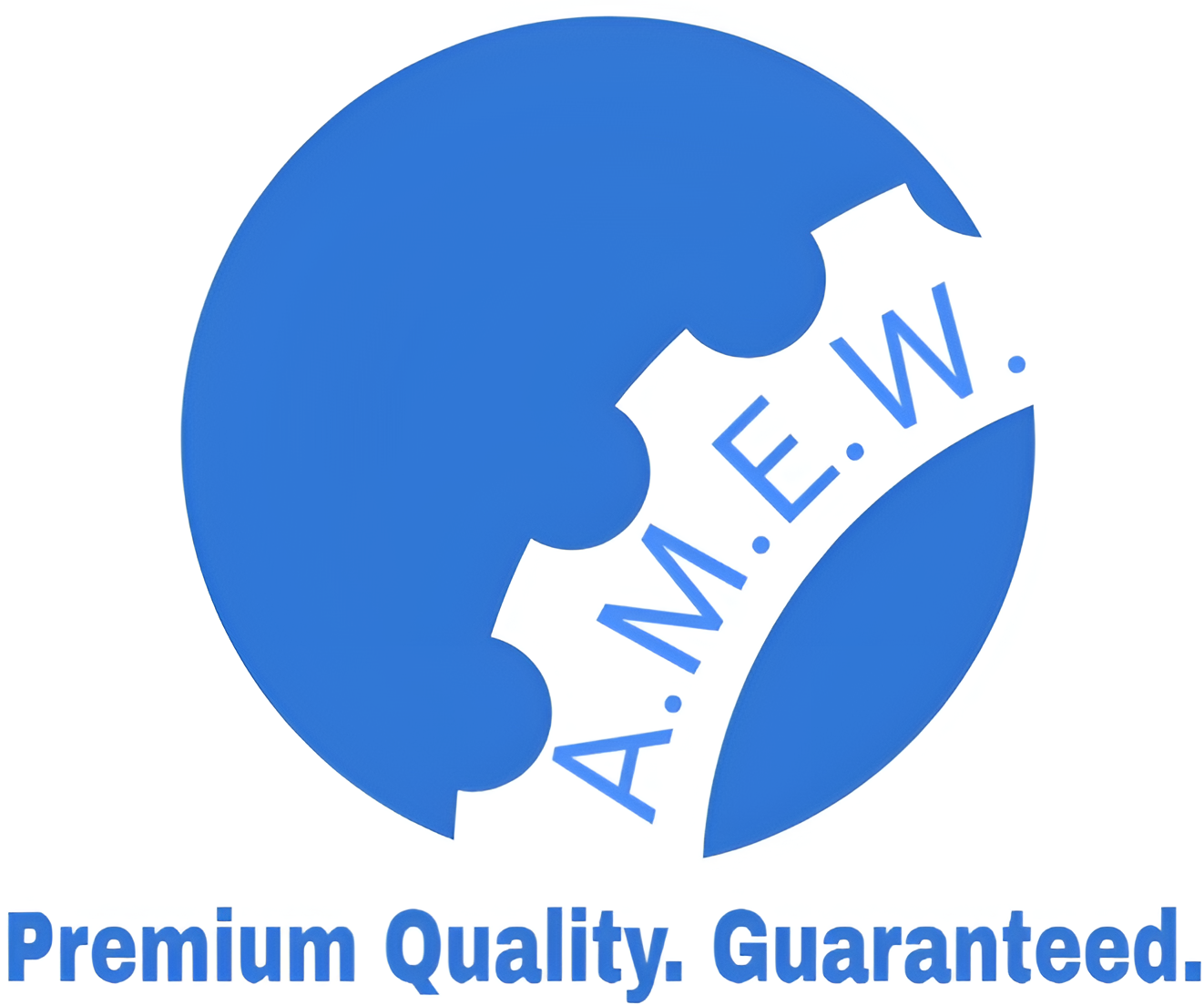Steel Plates
Steel plates are flat steel materials that are manufactured in various grades and thicknesses. They are used in a wide range of industries such as construction, shipbuilding, automotive, pressure vessels, and heavy machinery. Steel plates provide high strength, durability, and resistance to mechanical stress, making them a versatile material for various applications.
Steel plates come in different grades based on their chemical composition and mechanical properties. These grades define their suitability for specific applications, such as structural work, pressure vessels, or wear resistance.
Common Types of Steel Plates
- Structural Steel Plates: These plates are used in construction for building frames, bridges, and other structures. Common grades include S235JR, S355JR, and ASTM A36.
- Pressure Vessel Steel Plates: Designed to withstand high pressure, these plates are used in boilers, storage tanks, and reactors. Popular grades are ASTM A516, P265GH, and 16Mo3.
- Wear Resistant Plates: Engineered to resist abrasion, these plates are used in mining equipment, earth-moving machinery, and industrial wear parts. Grades include AR400 and AR500.
- Shipbuilding Plates: These plates have high strength and toughness, which is essential for the marine environment. Common shipbuilding grades include ASTM A131 and ABS DH36.
- High-Strength Low-Alloy (HSLA) Plates: HSLA steel plates offer higher strength and better resistance to atmospheric corrosion. These plates are used in lighter structures with high load-bearing requirements, such as cranes and towers. Common grades include ASTM A572 and A588.
Steel Plate Grades and Applications
| Plate Type | Grade | Standard | Applications |
|---|---|---|---|
| Structural Steel Plates | S235JR, S355JR, ASTM A36 | EN 10025, ASTM | Construction, bridges, building frames |
| Pressure Vessel Plates | ASTM A516 Grade 70, 16Mo3 | ASTM, EN 10028 | Boilers, storage tanks, pressure vessels |
| Wear Resistant Plates | AR400, AR500 | – | Mining equipment, excavators, wear parts |
| Shipbuilding Plates | ASTM A131, ABS DH36 | ASTM, ABS | Ship hulls, decks, marine structures |
| HSLA Plates | ASTM A572 Grade 50, A588 | ASTM | Bridges, towers, heavy equipment |
| High Carbon Steel Plates | 1045, AISI 1060 | AISI, ASTM | Machinery parts, cutting tools, dies |
| Cryogenic Steel Plates | ASTM A553, 9Ni | ASTM | Cryogenic storage tanks, LNG vessels |
Common Applications of Steel Plates
| Industry | Application Areas | Recommended Plate Type |
|---|---|---|
| Construction | Building frames, bridges, infrastructure | Structural Steel Plates |
| Oil & Gas | Storage tanks, pipelines, pressure vessels | Pressure Vessel Plates, HSLA Plates |
| Mining | Crushers, excavators, conveyor systems | Wear Resistant Plates |
| Shipbuilding | Ship hulls, offshore platforms, decks | Shipbuilding Plates |
| Heavy Machinery | Earth-moving equipment, cranes, industrial machines | High-Strength Steel Plates, Wear Plates |
| Power Generation | Boilers, heat exchangers, pressure vessels | Pressure Vessel Plates, Cryogenic Plates |
| Automotive | Chassis, structural reinforcements | Structural Steel Plates, HSLA Plates |
| Aerospace | Aircraft frames, landing gear components | High-Strength Steel Plates |
Advantages of Steel Plates
- High Strength: Steel plates provide excellent tensile and yield strength, making them suitable for load-bearing and heavy-duty applications.
- Durability: Resistant to wear, corrosion, and environmental stresses, steel plates have a long lifespan even in harsh conditions.
- Versatility: Available in various grades and thicknesses, steel plates can be tailored for different industries and applications.
- Weldability: Most steel plates are highly weldable, ensuring ease of fabrication and assembly.
- Cost-Effective: Steel plates offer a great balance of performance and cost, making them economical for large-scale projects.
Steel Plate Thickness and Sizes
Steel plates are available in a range of thicknesses, widths, and lengths to suit various project requirements. Standard thicknesses range from 5 mm to 200 mm, while widths typically range from 1000 mm to 3500 mm. Lengths can vary from 6000 mm to 12000 mm, with custom sizes available for specific projects.
Selecting the Right Steel Plate
Choosing the right steel plate depends on several factors including the required strength, environmental conditions, and the specific application. For general construction, S235JR or ASTM A36 plates are commonly used, while more demanding applications such as pressure vessels require ASTM A516 or P265GH plates. In abrasive environments, AR400 or AR500 wear-resistant plates are preferred.
Showing 1–16 of 104 results
-

10CRMO9-10 Steel Plate
Read more -

13CRMO4-5 Steel Plate
Read more -

17-4 PH Plates
Read more -

400 Wear Plate – Abrasion Resistant
Read more -

450 EM / S460G1 – Offshore – Energy Steel Plate
Read more -

450 Wear Plate – Abrasion Resistant
Read more -

500 Wear Plate – Abrasion Resistant
Read more -

50CrV4 Sheet
Read more -

50CrV4 Sheet
Read more -

A283 Grade C Plate
Read more -

A387 GRADE 22 CLASS 2
Read more -

A387 GRADE 5 CLASS 2
Read more -

A387/SA387 Chrome Moly Plates
Read more -

AASHTO M270 Plate
Read more -

Abrex 450 Plates
Read more -

Abrex 500 Plates
Read more

